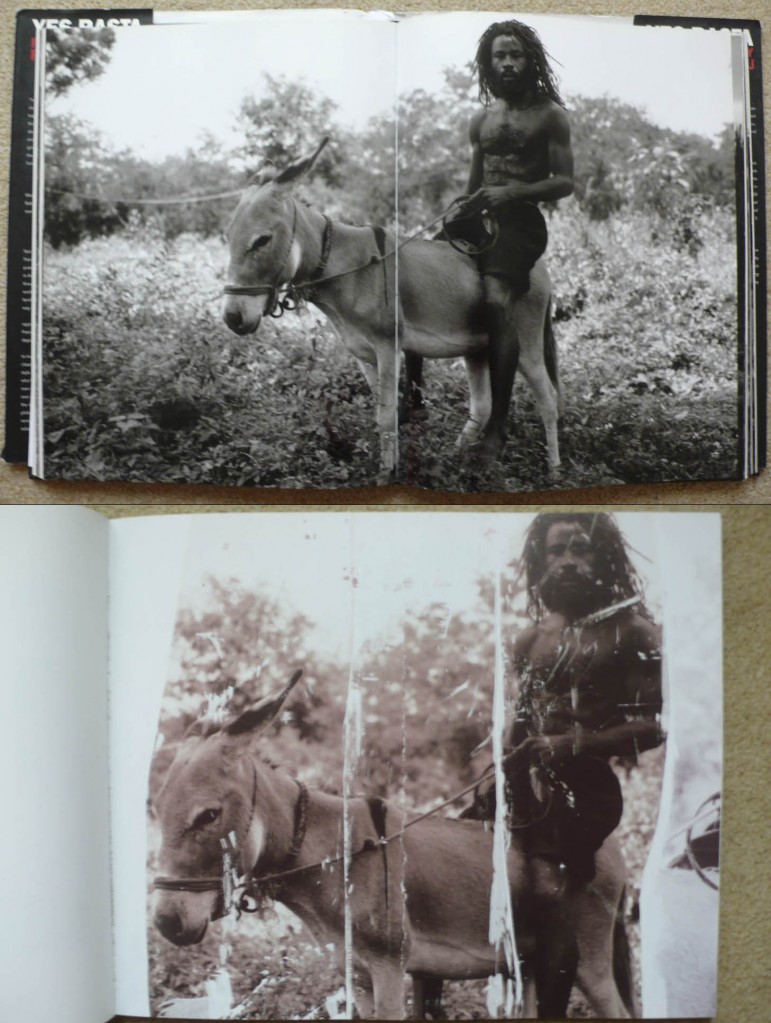Richard Prince הוא אמן שהתפרסם בשנות השבעים של המאה שעברה בזכות ה-"rephotograph". טכניקה זו עושה שימוש בתצלומים ובציורים שיצרו אחרים לצורך יצירה אמנותית "מקורית". היצירה המפורסמת ביותר של Prince, "תצלום מחדש" של תמונה מתוך פרסומת לסיגריות ידועות שצולמה במקור בידי Sam Abell, נמכרה בשנת 2005 תמורת למעלה ממיליון דולרים.
 |
| Richard Prince, appropriated from Sam Abell, Untitled (Cowboy), 1975 |
כיצד יכול "תצלום מחדש", שעושה שימוש בעבודה של אחרים ללא הכנסת שינויים מהותיים בתצלומים המקוריים, לא רק להיחשב כיצירה עצמאית אלא גם להיות מוצג בגלריות החשובות בעולם ולהימכר תמורת סכום עתק? ובכן, הכירו בבקשה את הפוסט מודרניזם.
פוסט מודרניזם איננו סגנון אמנותי וגם איננו התקופה באמנות שבאה לאחר ה"תקופה המודרנית" (מושג חסר משמעות כשלעצמו). פוסט מודרניזם הוא זרם בפילוסופיה של האמנות ששולל את עצם קיומה של מקוריות בעידן תקשורת ההמונים. ראשיתו במחאה כנגד הערכים המודרניסטיים של ההומאניזם המערבי: במקום אובייקטיביות, זהות, אחדות, מקוריות וודאות הוא מדגיש את הסובייקטיביות, את הקוטביות ואת הספקנות. התנועה הפוסט מודרניסטית תמיד ראתה בצילום כלי דמוקרטי, שיוויוני שמציע אלטרנטיבה לתפיסה האליטיסטית של האמנות. התצלום נועד לשכפול ולהפצה ולכן אין לו מקום במוזאון. אלא שלמרבה המבוכה, הגלריות היוקרתיות בניו יורק דווקא אימצו לחיקן את האמנים הפוסט מודרניסטים. יש להבין שאוצרי הגלריות, המייצגים את מיטב האליטיזם האמנותי, צמחו מאותה שכבה אינטלקטואלית ששימשה כר לפוסט מודרניזם של שנות השבעים והשמונים. יצירות פוסט מודרניות החלו להימכר לאספנים שראו בהן למרבה האבסורד את חוד החנית של האמנות המקורית. הגדילה לעשות Sherrie Levine שמכרה העתקים מתצלומיו של Walker Evans בסכומים שהיוצר המקורי יכול היה רק לחלום עליהם אילו חי עד 1980.
 |
| Sherrie Levine, appropriated from Walker Evans, After Walker Evans, 1980 |
בשנת 2008 פרסם הצלם Patrick Cariou את ספר התצלומים Yes Rasta שעסק בתרבות הרסטה בג'מייקה. Richard Prince עט על הספר הזה כמוצא שלל רב וניכס לעצמו לפחות 41 תצלומים אותם "צילם מחדש" והציג בתערוכה. לזכותו יאמר שהפעם הכניס שינויים בחלק מהעבודות המקוריות.
 | ||
| Top: Patrick Cariou, from Yes Rasta, 2008; Bottom: Richard Prince, Untitled, 2009 |
Prince הגדיל לעשות והציג את התצלומים בתערוכה ב-Gagosian gallery בניו יורק. Cariou, מצידו, נתקל בסירוב להצגת העבודות בתערוכה בטענה שאלה חומרים "משומשים". הוא תבע את Richard Prince לדין בגין הפרת זכויות יוצרים. ב-18 במרץ השנה פרסם בית המשפט את הכרעתו, בה קיבל את כל טענות התובע. מעניין לקרוא את חלק מתשובתו של Prince לתביעה:
Defendants assert that Cariou’s Photos are mere compilations of facts concerning Rastafarians and the Jamaican landscape, arranged with minimum creativity in a manner typical of their genre, and that the Photos are therefore not protectable as a matter of law, despite Plaintiff’s extensive testimony about the creative choices he made in taking, processing, developing, and selecting them.
הדברים קרובים ברוחם למה שרשמתי כאן בדבר תפקיד עינו של הצלם ביצירה. מצד שני, טענתו של Prince בדבר "יצירתיות מינימלית" היא ציניות מרושעת. כדאי שיציץ במראה. הנה מה שיש לו לומר על זכויות יוצרים באופן כללי:
הראיון המלא כאן.Copyright has never interested me. For most of my life I owned half a stereo so there was no point in suing me, but that’s changed now and it’s interesting. I’m actually in the situation where I am being sued at the moment (by a French photographer I might add) for taking his original images and turning them into paintings. It’s something that’s really problematic for me because in a strange way now I find myself censoring things that I look at and it’s almost like I can’t do it anymore, because people know who you are. So sometimes it’s better not to be successful and well known and you can get away with much more. I knew what I was stealing 30 years ago but it didn’t matter because no one cared, no one was paying any attention. It was an attitude to do with the fact that I didn’t think there was a future. Unfortunately that didn’t come true. I’ve now done these paintings based on Rastafarians. Basically I like the way things look; that’s all my decisions are about – if it looks good, it is good. So anyway, unfortunately I took too many of these Rastafarian (images) from this guy and I didn’t really even think to ask. I don’t think that way, it didn’t occur to me to ask him and even if I did and he said no, I still would have taken them. I figured I’d do them and maybe if he objected I’d deal with that later. I really like the Rasta paintings and that was the last body of work that I have done. I only pay attention to the negativity that people have [as] a way of explaining their feeling towards my work. I think they were described as ‘garbage’, ‘the worst’ and ‘vomit’. It’s funny because if this guy had let it alone, well it was a very unsuccessful body of work and it would have gone away. I have been sued in the past but the judges and the umpires and the critics of the world, they don’t really care about aesthetics. I never wanted to go to court. Anybody who went to court basically died in court. You can go back to Oscar Wilde, to Lenny Bruce ... Luckily just recently a very good friend of mine, Jeff Koons, won an important case on copyright and fair use, which was handed down about two years ago. So I am crossing my fingers on that.
.

פוסט מעולה. אתה יכול להוסיף עוד דוגמאות ל"יצירות" שכאלה?
השבמחקBazzaz,
השבמחקיש עוד המון דוגמאות, אם כי פחות ידועות. אין לי זמן לפרט כרגע, אבל תוכל לחפש תחת "photographs of photographs".